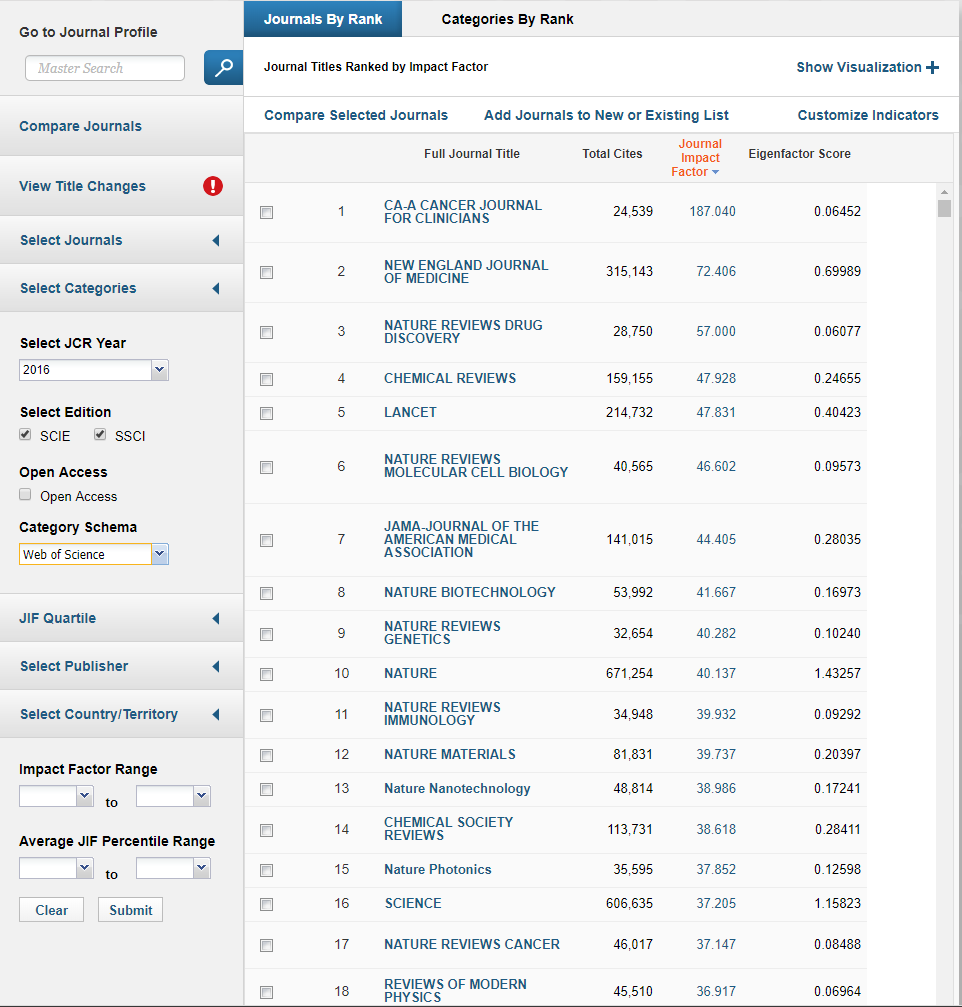Derek Lowe writes here [link] about “the sudden demise of Beall’s List of Predatory Publishers“. He explains that these are publishers whose journals “publish verbatim whatever gets sent in, despite promises of peer review and editing, as soon as the funds hit their bank account“. The list was controversial and the reasons for it’s demise are not public. However copies have been retrieved from the internet archives, for example here [link]. The problem with a blacklist such as this is that publications deserving to be on it keep mutating and growing in number, so it is difficult to keep track of them. An arguably better approach is to focus on publishers and publications that can be trusted, a list that will change more controllably. Helpful sources for locating these include:
- the Journal Citation Reports list, a citation-based research analytics tool
- the Directory of Open Access Journals (DOAJ)
An example of the former is shown below, where 19 out of over 12,000 journals are ranked according to their ‘Impact Factor’. This is an annual measure, using data from the two previous years, which compares journals according to their share of the total number of citations over the period. Impact Factor needs to be used with the knowledge that different academic fields have different patterns of citation activity.
It is also possible to identify highly-cited researchers.

